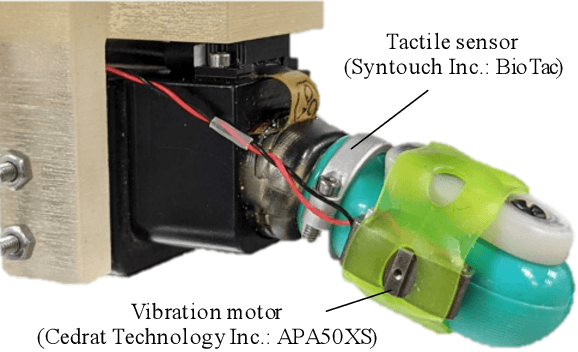Tactile Perception based on Injected Vibration in Soft Sensor
Paper and Code
Apr 20, 2021



Tactile perception using vibration sensation helps robots recognize their environment's physical properties and perform complex tasks. A sliding motion is applied to target objects to generate tactile vibration data. However, situations exist where such a sliding motion is infeasible due to geometrical constraints in the environment or an object's fragility which cannot resist friction forces. This paper explores a novel approach to achieve vibration-based tactile perception without a sliding motion. To this end, our key idea is injecting a mechanical vibration into a soft tactile sensor system and measuring the propagated vibration inside it by a sensor. Soft tactile sensors are deformed by the contact state, and the touched objects' shape or texture should change the characteristics of the vibration propagation. Therefore, the propagated-vibration data are expected to contain useful information for recognizing touched environments. We developed a prototype system for a proof-of-concept: a mechanical vibration is applied to a biomimetic (soft and vibration-based) tactile sensor from a small, mounted piezoelectric actuator. As a verification experiment, we performed two classification tasks for sandpaper's grit size and a slit's gap widths using our approach and compared their accuracies with that of using sliding motions. Our approach resulted in 70% accuracy for the grit size classification and 99% accuracy for the gap width classification. These results are comparable to or better than the comparison methods with a sliding motion.
 Add to Chrome
Add to Chrome Add to Firefox
Add to Firefox Add to Edge
Add to Edge